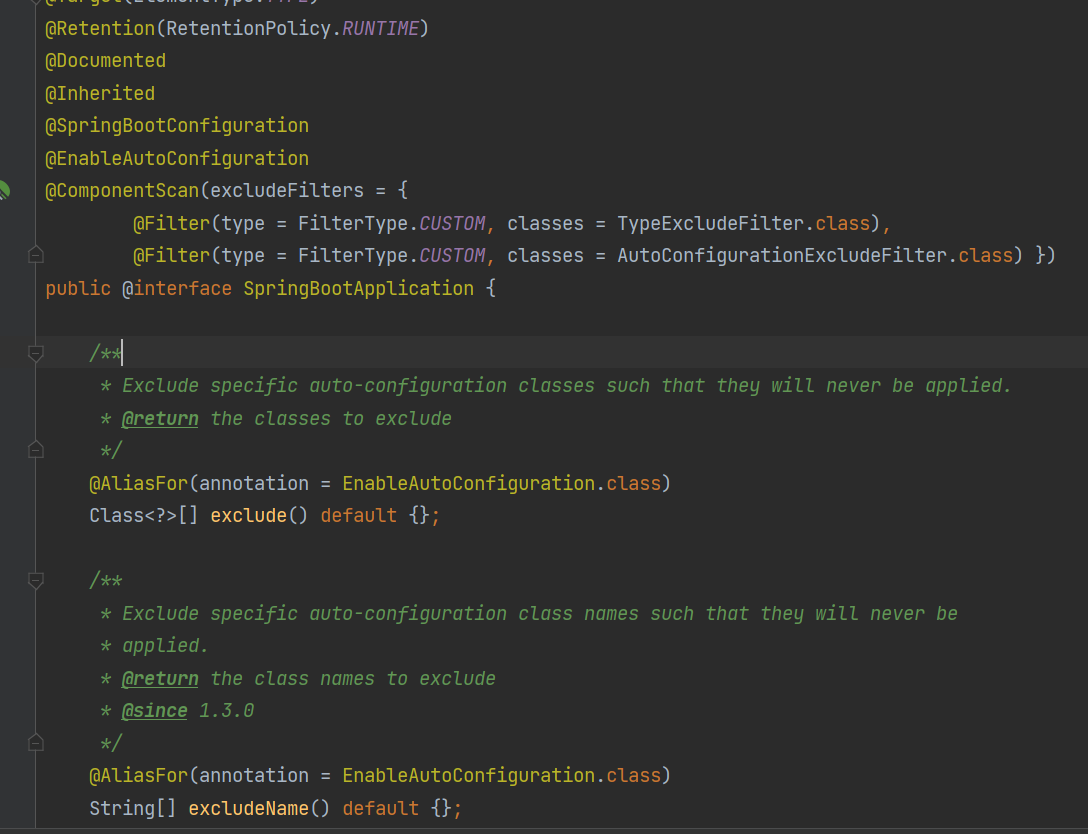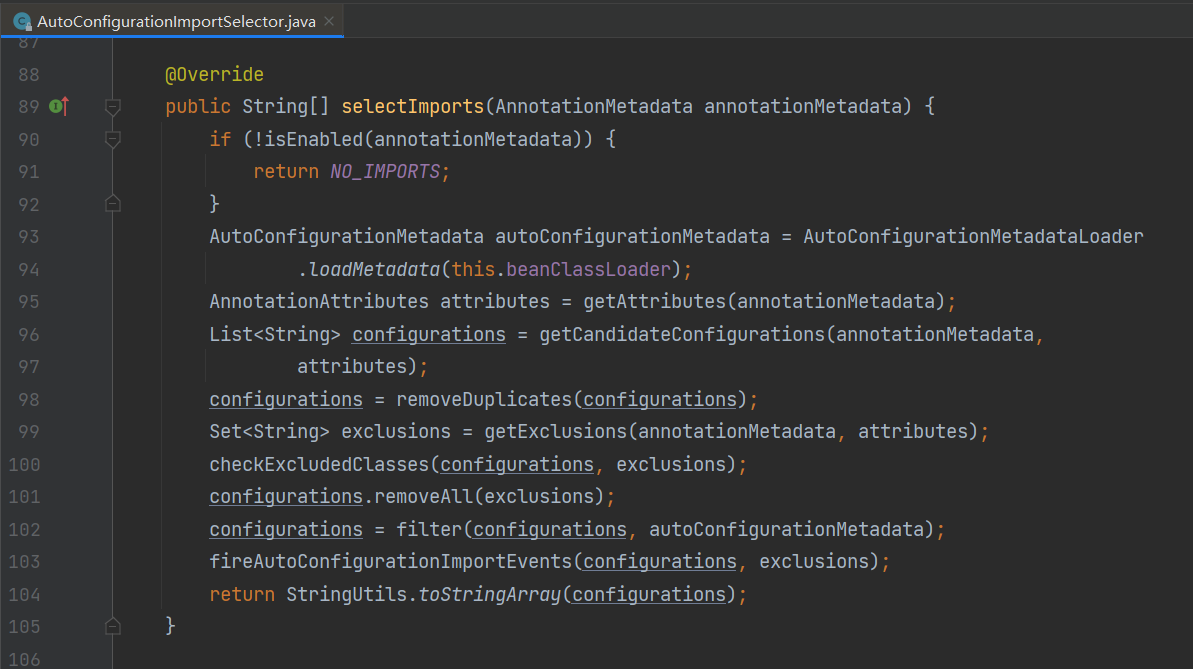一、排除自动配置类的方式
1.1 使用@SpringBootApplication注解
在启动类上使用@SpringBootApplication注解的exclude或者excludeName属性
@SpringBootApplication(exclude = {RabbitAutoConfiguration.class})
@SpringBootApplication(excludeName = {"org.springframework.boot.autoconfigure.amqp.RabbitAutoConfiguration"})
1.2 使用@EnableAutoConfiguration注解
在启动类或配置类上使用@EnableAutoConfiguration注解的exclude或者excludeName属性
注意:
不要多次配置@EnableAutoConfiguration注解,否则会被覆盖。
如果配置了不生效,可以检查下是否在不同的配置类上重复配置了@EnableAutoConfiguration注解
@EnableAutoConfiguration(exclude = {RabbitAutoConfiguration.class})
@EnableAutoConfiguration(excludeName = {"org.springframework.boot.autoconfigure.amqp.RabbitAutoConfiguration"})
1.3 在properties、yml等配置文件中添加排除项
application.properties
spring.autoconfigure.exclude=org.springframework.boot.autoconfigure.amqp.RabbitAutoConfiguration
application.yml
spring:
autoconfigure:
exclude:
- org.springframework.boot.autoconfigure.amqp.RabbitAutoConfiguration
- org.springframework.boot.autoconfigure.jdbc.DataSourceAutoConfiguration
二、排除自动配置类之后,添加自动配置类的方式
基础工程排除了自动配置类之后,如果某个项目需要启动自动配置类,那么有以下几种方式
2.1 删除排除自动配置类的代码
2.2 使用@Import注解,在配置类上手动导入
以下代码,是在配置文件里配置了tfb.rabbitmq.enabled=true之后,开启RabbitMQ的自动配置
@ConditionalOnProperty(prefix = "tfb.rabbitmq", name = "enabled", havingValue = "true")
@Configuration
@Import(RabbitAutoConfiguration.class)
public class TfbRabbitConfig {
}

三、源码解析
3.1 @SpringBootApplication注解:
该注解的源码里,有**@AliasFor**注解,
@AliasFor(annotation = EnableAutoConfiguration.class)
Class<?>[] exclude() default {};
意思是@SpringBootApplication注解的exclude属性,引用的是@EnableAutoConfiguration注解的同名属性exclude,即作用是一样的。
@AliasFor 注解 - 程序员自由之路 - 博客园 (cnblogs.com)

3.2 @EnableAutoConfiguration注解
@EnableAutoConfiguration@Import(AutoConfigurationImportSelector.class)

** 3.3 AutoConfigurationImportSelector**
@EnableAutoConfiguration引入了AutoConfigurationImportSelector,该类的引入配置文件代码selectImports里写了如何排除指定类的方法

四、maven利用profile根据不同环境引用相应jar包
pom.xml里配置profile,在里面配置不同环境需要的jar包。
参考:maven根据profile变量引入或者不引入依赖,引入不同版本的依赖_lzhfdxhxm的博客-CSDN博客
<profiles>
<profile>
<id>dev</id>
<activation>
<activeByDefault>true</activeByDefault>
</activation>
</profile>
<profile>
<id>rabbitmq</id>
<activation>
<activeByDefault>false</activeByDefault>
</activation>
<dependencies>
<dependency>
<groupId>org.springframework.boot</groupId>
<artifactId>spring-boot-starter-amqp</artifactId>
</dependency>
</dependencies>
</profile>
</profiles>
五、说明
为什么不需要加载自动配置类呢?原因是基础工程提供了RabbitMQ的使用工具,但是各个项目可以根据需要启用不启用RabbitMQ。使用配置文件的属性开关方式,可以实现这个目的。
但是,有个问题:如果项目不需要RabbitMQ,那么其实不需要引入RabbitMQ的相关依赖包,而这种方式,还是会把这些依赖包引入进去(可以用第四点说明的利用profile配置依赖信息,如果没有引入rabbitmq配置文件,那么不打包相关的依赖包)。
更好的解决方式:将相关的代码整合到一个工程了,制作一个RabbitMQ的starter工程。如果项目需要使用RabbitMQ,那么就引入该starter工程就可以了。
版权归原作者 lzhfdxhxm 所有, 如有侵权,请联系我们删除。